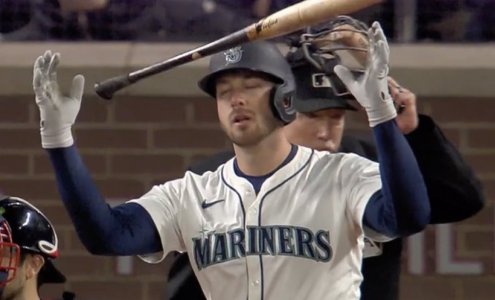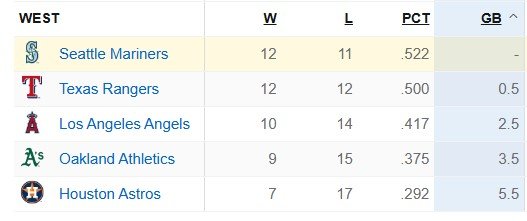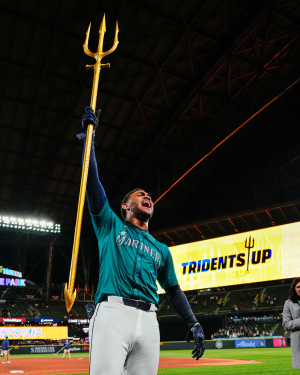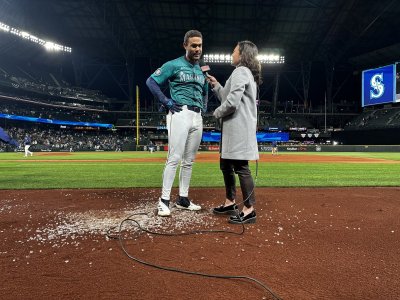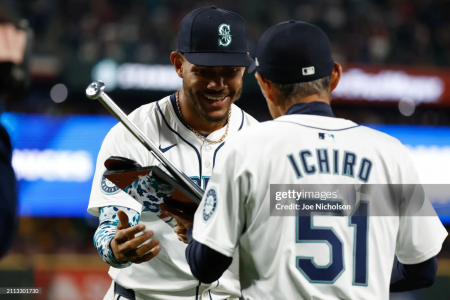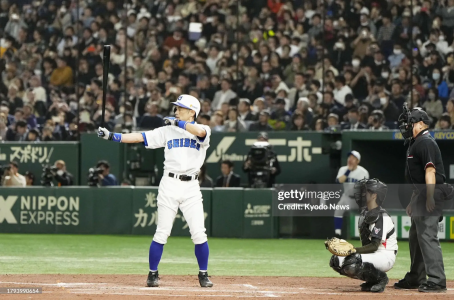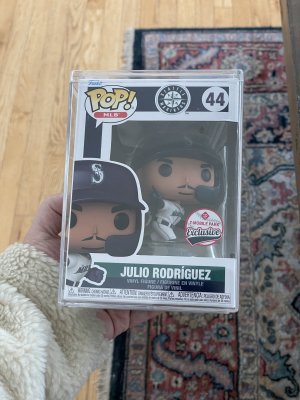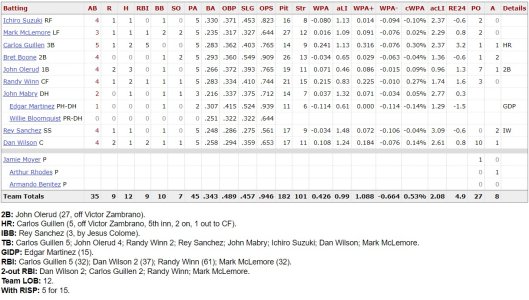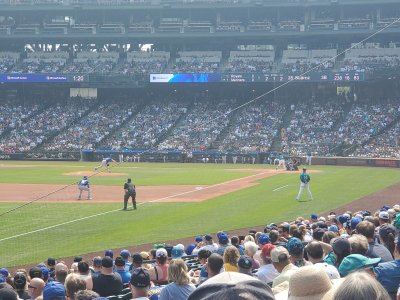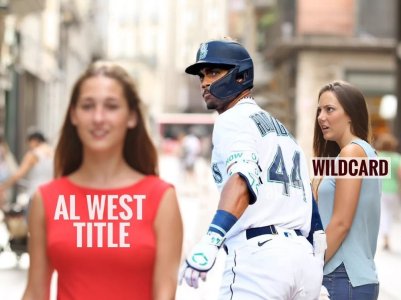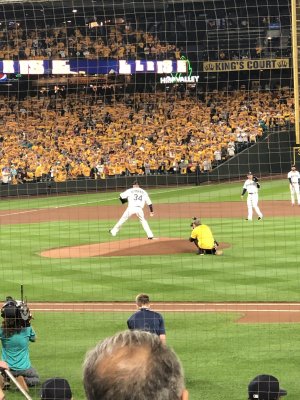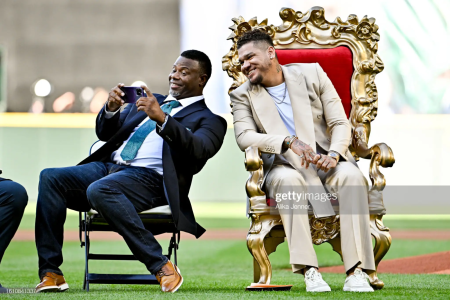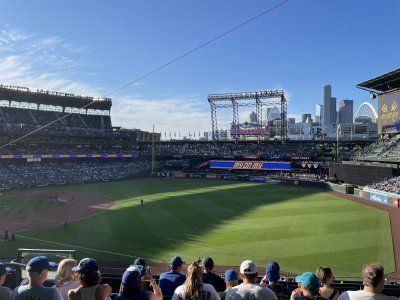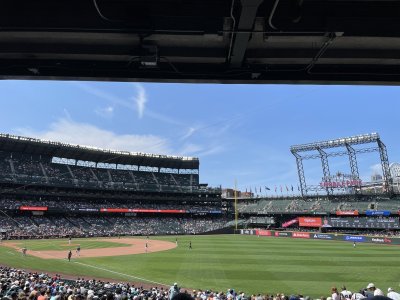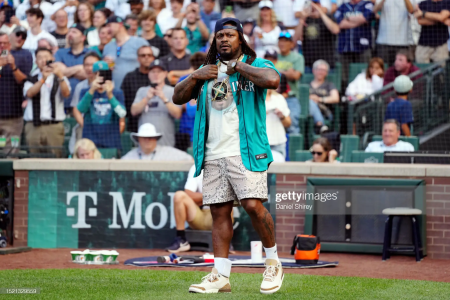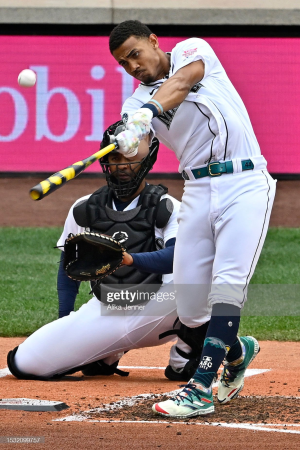More than just ‘The Throw’: J.P. Crawford gets his feet underneath him with Mariners
By Corey Brock 2h ago
2
This story isn’t about “The Throw.”
I mean, it is — and it isn’t. Because when trying to understand just how far Seattle shortstop J.P. Crawford has come defensively this season, replaying his July 26 gem on a continual loop isn’t necessarily the best way to illustrate his notable growth.
But man, it sure is a lot of fun.
Nothing else Crawford does this season — or, quite possibly the rest of his career — will likely come close to the play he made on Detroit’s Jeimer Candelario’s ninth-inning rocket of a grounder that carried Crawford into shallow left field and on to one knee. Then the real fun began, as Crawford twisted like a pretzel and uncorked a strong throw to first base that narrowly beat a sprinting Candelario to end the inning.
The crowd at T-Mobile Park gasped. Pitcher Roenis Elías nearly lost his mind in celebration, and following the game, everyone agreed they had seen something entirely spectacular.
“I haven’t seen something like that in a long, long time,” said Tigers manager Ron Gardenhire, who has been in professional baseball since 1979 and doesn’t deal in hyperbole.
“That’s about as good of a play as you’re ever going to see by a shortstop,” said Mariners manager Scott Servais, himself a professional since 1989.
It was a marvelous play, one that will certainly feature on ballpark video screens in between innings for years to come. But it was just one play. To truly understand how much Crawford has improved during his first year with the Mariners, it makes more sense to digest a greater sample size.
And when you do that, you begin to think Seattle, which has gone through seven different opening-day shortstops over the last 11 seasons, may have finally put a stop to the revolving door at the position. That’s not something anyone could have said with conviction a year ago, when Crawford struggled with inconsistency, injuries and — maybe more than he’d like to admit — the burden of expectations that go with being a first-round draft pick.
This isn’t about how Crawford made that superlative play against Detroit. It’s about how he’s gone about making every
other play, providing the Mariners with one of the few highlights amid the morass of a lost season.
Seattle first base coach Perry Hill saw plenty of Crawford in 2018 when Crawford was coming up with Philadelphia and Hill coached in Miami. Hill saw an athletic player who was brimming with potential, but also one whose growth was impeded by a few fundamental flaws.
“He had tremendous arm strength. But his arm wasn’t playing … because his feet wouldn’t let it,” Hill said. “Your feet align your body to make your throw more efficient.”
When Philadelphia selected Crawford with the No. 16 overall pick in 2013 out of Lakewood High School near Los Angeles, the Phillies figured that in time, they might have the replacement for Jimmy Rollins.
Crawford, Baseball America’s No. 6 overall prospect ahead of the 2016 season, reached the big leagues in September 2017 at age 22. While he showed flashes of greatness over his first season and change, he was besieged by inconsistency and injuries. He missed a total of three months last season with a right forearm strain and a broken left hand. Defensively, he made 18 errors in 27 starts at shortstop and posted minus-1.3 defensive wins above replacement. His offense wasn’t much better, with a .214 batting average in 225 plate appearances.
In December, with the Mariners’ rebuild fully underway, the team dealt All-Star shortstop Jean Segura (and the $58 million left on his contract) and relievers Juan Nicasio and James Pazos to the Phillies in exchange for Crawford and 1B/DH Carlos Santana. It wasn’t a trade Philadelphia would have agreed to, say, six months prior, but they were in win-now mode, and Crawford was already in his sixth season with the organization, predating his manager and general manager.
It seemed Philadelphia had grown impatient with its former prospect. “Shortstop was an area we didn’t get a lot of production,” Phillies general manager said Matt Klentak told reporters after the deal.
But Crawford had been a player the Mariners had talked about internally when the organization’s brain trust began to look at different paths to take for 2019 and beyond.
In September, about 20 staffers from the Mariners’ baseball operations and analytics departments participated in what general manager Jerry Dipoto called a “resituated roster-building exercise.” Each was asked to brainstorm trades, free-agent signings and other moves for creating a roster that best represented their vision for the future. There were only a few rules:
- Each participant began with a 25-man roster that included all of the team’s guaranteed contracts at that point of the exercise (Segura, Nicasio, Robinson Canó, Mike Leake, Dee Gordon, Kyle Seager and Félix Hernández). The remaining spots were left blank. Players and contracts could be traded.
- All deals had to be reasonable.
- The intent of this exercise was to build a roster capable of sustainable success at a championship level as soon as possible.
The results, Dipoto said, were stark.
“Every one of the reimagined rosters turned in included some form of a rebuild,” Dipoto said. “Some more aggressive than others.
“The most oft-mentioned hypothetically-acquired player was J.P., who was identified by virtually all of those who took part in the project.”
Once Dipoto and Co. decided to go all-in on their rebuild, Crawford became one of the team’s top targets. And when the Dec. 3 deal was done, Crawford welcomed the change.
“It helps to take a new look at things, to get a new perspective and get a fresh start with a new organization,” he said. “Getting that fresh start is huge. You’re able to breathe a little bit, find your comfort level.”
The Mariners had the player they felt would be their shortstop of the future. Now they needed someone to unlock Crawford’s potential. Luckily for them, they’d already hired Hill in late November.
The 67-year-old has a great reputation within the industry for his defensive work with infielders. (A Pittsburgh Post-Gazette story dubbed him an “
infield guru” while with the Pirates in 2009). One of his top pupils was Mariners second baseman Dee Gordon, who won a Gold Glove with the Marlins in 2017.
Hill and Crawford went to work shortly after the new year, first convening at the team’s spring training facility in Arizona in January, long before the rest of the team reported. That first day, the two worked alone on a field at the complex. It was an eye-opening workout for Crawford, but it was what followed that resonated — a light bulb moment delivered via conversation, not fungo.
“We sat down and talked about the importance of feet,” Hill said. “I didn’t think he knew about it. I told him that your arm is only as good as your feet will let it be. Once he understood it … I think it sort of clicked in his mind, and he realized how important it was. From there, it took off.”
Crawford was sold after just one day of work together, and that work continues. The pair can often be seen working out together hours before a game.
“He has really busted his ***,” Hill said. “His work ethic was second to none.”
Hill stresses fundamentals and consistency. He wants his players ready to break on balls four to five steps either direction so they can get their feet set in a position to make a strong throw.
Beyond those five steps, like we saw with Crawford’s play against Detroit?
“We tell them to be an athlete,” Hill said. “On that play, he certainly was an athlete.”
By any measure, Crawford has been a boon for Seattle in 2019.
Offensively, he is still very much a work in progress, but the team has seen gains. He’s hitting .246/.330/.399 with four home runs, 36 RBIs and five steals in the 62 games since joining the team from Triple-A Tacoma in May. A left-handed batter, he’s hitting the ball the other way more thanks in part to an improved barrel path.
“I think he’s got a chance to be an above-average major-league offensive player,” Servais said. “He’s got extra-base power. You don’t see the power go over the fence so much, but he can hit doubles (and) he runs well.”
But it’s Crawford’s defense that has earned the highest marks, thanks in no small part to the work Hill has put in with him.
He has made the easy plays, and, of course, the remarkable ones. After Opening Day starting shortstop Tim Beckham made seven errors in the first 17 games, Crawford has steadied one of the most important positions on the field, posting a 4.3 dWAR.
“J.P. has been terrific. I’m so happy for him and for the Mariners,” Dipoto said. “When we acquired him, we felt we’d nabbed our shortstop for the foreseeable future. We feel even more strongly today.
“In a major-league season that has not always been easy or exciting … it’s been easy to get excited about his development.”
Said Servais: “I think he knows he’s a major-league shortstop for a long time.”
Servais couldn’t be happier with Crawford’s defensive gains in 2019, and he’s not the least bit surprised that Hill was able to make quick inroads with his newest pupil.
“A ton of credit there goes to Perry Hill … but ultimately it goes to the player because the player can decide whether he’s going to listen to this old guy or not,” Servais said. “He listened to the old guy because the old guy is really smart and knows his stuff.”
Crawford couldn’t agree more.
“It’s more than just footwork,” he said. “(Hill) has helped me out tremendously with everything. I am really happy that he’s here working with me every day. I think he’s saved my career.”
 just heard the news from last night. Pathetic.
just heard the news from last night. Pathetic.




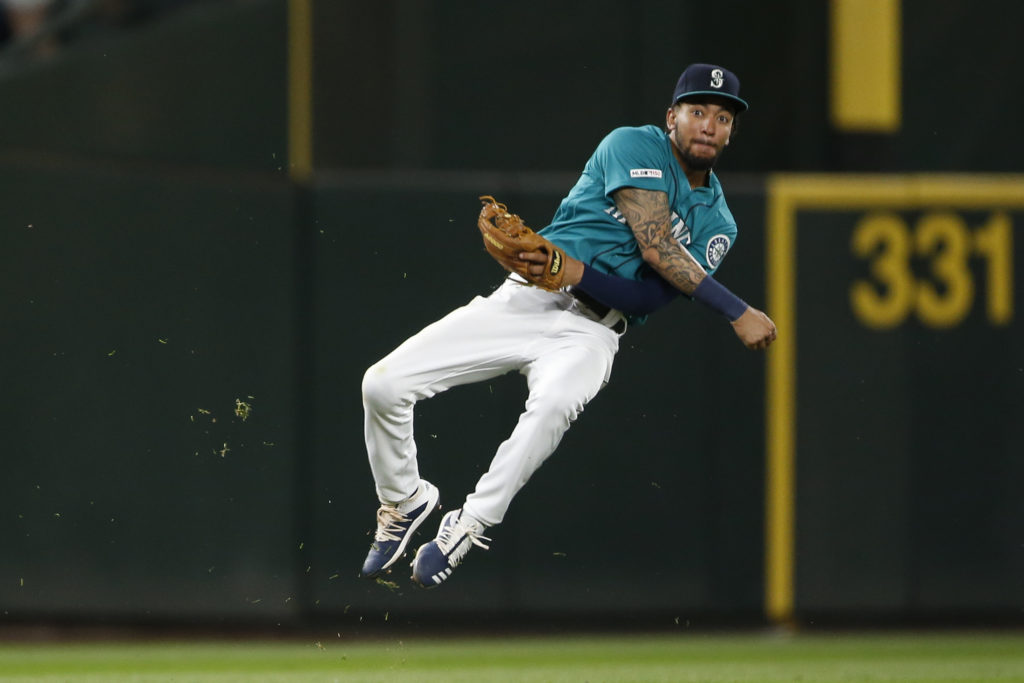
 AIRBNB SOUF
AIRBNB SOUF





